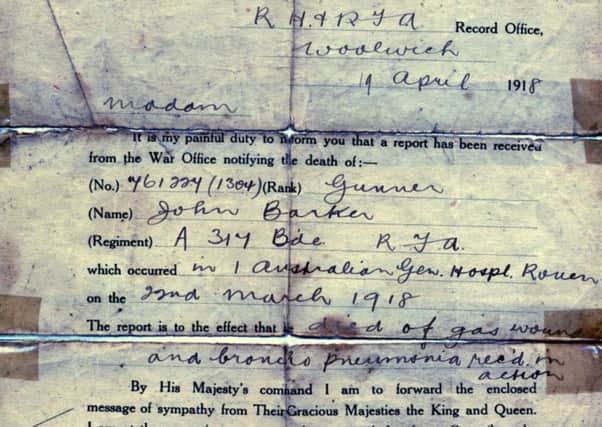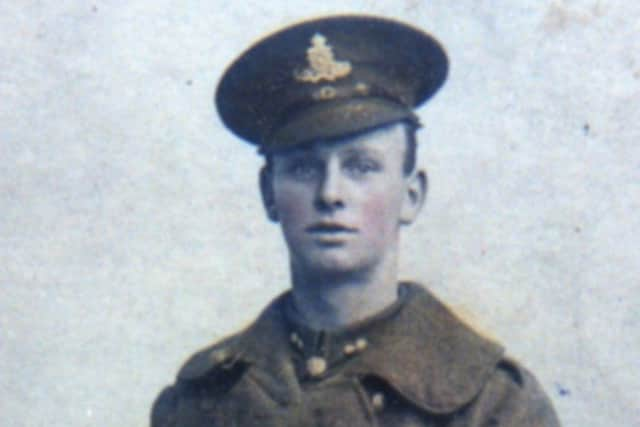Exhibit of the Week: World War One memories, Scarborough Maritime Heritage Centre


The pictures shown here are from John Algernon Barker’s family. John was born in Scarborough in 1897. In 1916, age 19, he married Dorothy Smart and they had a daughter, Kathleen. He enlisted in the Royal Field Artillery 2nd Northumbrian Brigade and went off to France. He was gassed in March 1918 and died on March 22 that year in Rouen, age 21. He was buried in St Sever cemetery extension. A B104 form was sent to his family.
Twenty five years later, in 1944, his daughter, Kathleen, married in Scarborough and had seven children, one of whom is Lindy Rowley, founder of the Scarborough Maritime Heritage Centre.
Advertisement
Hide AdAdvertisement
Hide AdThe First World War was triggered on June 28, 1914, when a Serbian terrorist shot and killed Archduke Franz Ferdinand, heir to the Austro-Hungarian throne. Austria-Hungary declared war on Serbia on July 28. Russia and France sided with Serbia and Germany supported Austria-Hungary. Other countries around the world were soon pulled into the conflict with Britain declaring war on August 4. The war ended four years later on November 11, 1918.


The trench network stretched approximately 25,000 miles from the English Channel to Switzerland. The area was known as the Western Front. British poet Siegfried Sassoon wrote, “When all is done and said, the war was mainly a matter of holes and ditches.”
The Germans released about 68,000 tons of poisonous gas, and the British and French released 51,000 tons, 91,198 died as a result.
The greatest single loss of life in the history of the British army occurred during the Battle of the Somme, when they suffered 60,000 casualties in one day and 274 German U-boats sank 6,596 ships. Many of these were sunk near the coast, particularly in the English Channel, 17,000 merchant seamen and fishermen lost their lives along with 10,000 naval personnel.
Advertisement
Hide AdAdvertisement
Hide AdMore than 500,000 pigeons carried messages between headquarters and the front lines. Groups of pigeons trained to return to the front lines were dropped into occupied areas by parachutes and kept there until soldiers had messages to send back.


The war also helped to bring about the emancipation of women. Women took over many traditionally male jobs and showed that they could perform them just as well. In 1918, most women over the age of 30 were given the vote in the parliamentary elections. The war also helped hasten medical advances. Physicians learned better wound management and the setting of bones. Harold Gillies, an English doctor, pioneered skin graft surgery.
l The Scarborough Maritime Heritage Centre will have a special exhibition to mark the centenary focusing on the 841 names listed on the Oliver’s Mount war memorial. When the war memorial was inaugurated, on September 26, 1923, the names listed were by application so did not include all those who died and were from Scarborough. We will have lists of all Scarborough’s men who fought and died but would also like to hear now from any local residents who can add personal family stories or information about their ancestors who took part. Please contact us by phone, email, letter or calling in.